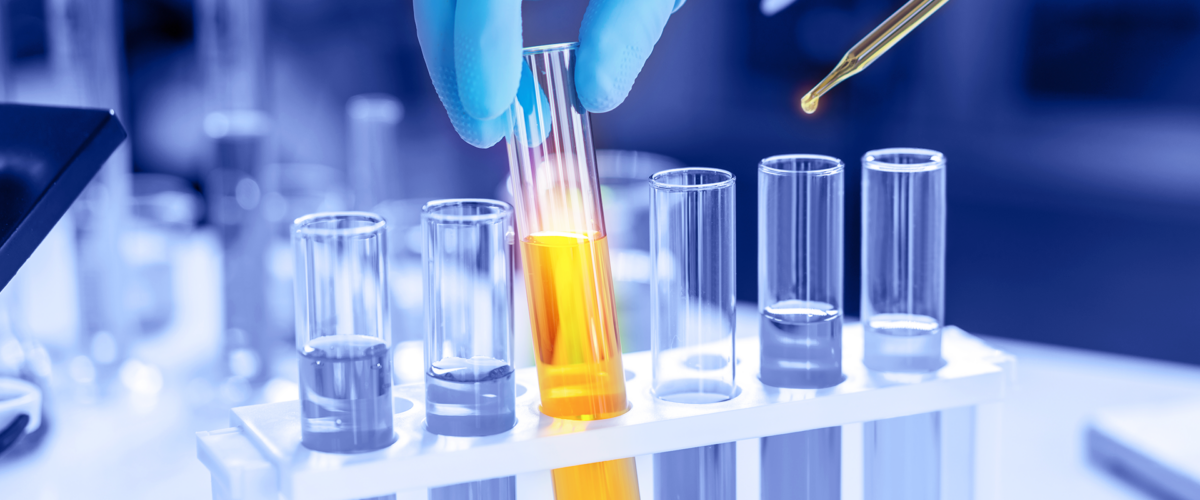artikel | 06 dec 2023
Switch of biological medicinal products

The Swedish government has tasked the Swedish Medical Products Agency (Sw. Läkemedelsverket, MPA) with investigating the use of single and multiple switches between biological medicinal products in Sweden, as well as the substitution of such products at pharmacies. On 15 September, the MPA published an interim report, while the final report is expected in April 2024. In this article, Setterwalls outlines the MPA’s conclusions in the interim report, as well as the current legal situation regarding substitutability of biological medicinal products.
As an initial remark, in the context of the MPA’s interim report, switch means a switch of medicinal products because of alternating use of the original biological medicinal product (reference medicinal product) and biosimilars as a result of alternating prescription by prescribing doctors or use in healthcare. The switch may be a single switch, i.e. one switch – whereas initial switch refers to a switch from a prescribed medicine to a biosimilar upon initiation of treatment. Multiple switches refer to repeated switches (i.e. double switch, triple switch etc.) between the reference medicinal product and the biosimilar, or between different biosimilars. In discussion of the interim report, it is important to keep the concept of switch separate from substitutability, which refers to substitution that takes place at outpatient pharmacies, and which is based on decisions from the MPA and TLV.
In summary, the MPA concludes that switching (including multiple switching) commonly occurs and seems to be generally accepted in Sweden, both in the inpatient setting and when prescribing in the outpatient setting. Therefore, the MPA sees no reason to discourage or restrict single or multiple switching to and between the reference products/biosimilars on the market today. However, the MPA’s conclusions on substitution in pharmacies will be discussed in the final report.
Current legal framework on substituability of biological medicines
Today, substitutability of medicinal products in general is governed by Chapter 4 Article 22 of the Medicinal Products Act (Sw. Läkemedelslagen). The Article states that, when a marketing authorisation has been granted, the MPA is to decide whether the medicinal product is substitutable by another medicinal product. A medicinal product is considered substitutable by another if they are considered equivalent. As such, regardless of which procedure for approval has been used, and regardless of whether the product is a biological or other medicinal product, it is the MPA’s decision whether the product is medically substitutable by another product.
In assessing medical equivalence, the MPA considers the efficacy and safety of each individual product. Substitutable medicines must (i) contain the same active substance of the same strength, (ii) have the same dosage form, and (iii) be therapeutically equivalent. In addition to these basic criteria, several other aspects are taken into account, such as the characteristics of the product and the information provided in the package leaflet. According to the MPA, the fact that two products are approved for different indications does not prevent them from being considered as medically substitutable if all other criteria are fulfilled. However, there may be important differences in the patient information that prevent the products from being considered as substitutable.
In that regard, it should be noted that the MPA’s decision on medical substitutability does not necessarily mean that the product will be subject to substitution at pharmacies once prescribed. Rather, after the MPA has decided on which products are substitutable medicines, the Dental and Pharmaceutical Benefits Agency (Sw. Tandvårds- och läkemedelsförmånsverket, “TLV”) decides on the actual substitution within the pharmaceutical benefits scheme (Sw. Läkemedelsförmånerna) by classifying medically equivalent products into groups. TLV’s decision on substitutability between medically equivalent products is based on package size, whereby products of the same package size category are subject to substitution at pharmacies.
In summary, the MPA issues decisions on medical substitutability based on whether products are medically equivalent. Subsequently, TLV classifies products within the pharmaceutical benefits scheme into categories based on package size, where substitution at outpatient pharmacies is based on these groups. In making the decision on substitutability, neither TLV nor the MPA makes any formal differentiation between biological products and other medicinal products as such. However, no biological medicinal products have to date been deemed as substitutable.
Current state of switch of biological products in Sweden
The MPA’s interim report referenced in this article focuses on describing the current state of affairs in Sweden. Based on this interim report, the MPA will also evaluate the possibility of substitution of biological medicinal products at pharmacy level in its final report, which is expected in April 2024.
The interim report concludes that the treatment with biosimilars is chosen by the prescribing doctor in consultation with the patient. This applies both to the initial choice between the reference medicinal product and the biosimilar at the start of treatment, and any change in prescription during ongoing treatment (i.e. a switch).
With the support of prescription data from TLV, data from the Swedish Rheumatology Quality Register and information gathered in dialogue with specialist medical associations and patient organisations, the MPA concludes that switch is present in all therapeutic areas where biosimilars are present. However, the extent may vary, and it has not been established whether restrictions in some therapeutic apply. It should also be borne in mind that this refers to single switch. The MPA states that there is a lack of studies of the presence of multiple switches in Sweden, and there are even less as regards repeated multiple switches (more than three times). The data presented in the literature is therefore limited for many substances and situations, and it is difficult to generalise that multiple switches are unproblematic. Conversely, however, the MPA states that there is nothing in the reviewed material to indicate that multiple switches would pose a problem from an efficacy or safety perspective. This is in line with studies on single switch, where even though it is widely practiced, there is no clinical experience of treatment failure or safety issues according to the MPA.
However, when practising both single and multiple switching it is important that patient information is adequate in order to avoid incorrect administration. As injection volume, excipients and devices may differ between biosimilars, it is prudent to assume that not all biosimilars suit all patients and an evaluation of these aspects may be needed when considering switching according to the MPA.
The MPA concludes that, given the extensive practice of switch without signals of impact on efficacy or safety, it is not reasonable to advise against switch except in situations where there is a risk of incorrect application when switching between products, and in cases where there are specific limitations regarding the use of a particular biosimilar, relative to how the reference medicinal product can be used.
Concluding remarks
While the interim report does not address the question of substitutability at pharmacies, as this will be discussed in the final report, a prerequisite for substitutability at pharmacies is that there is sufficient experience of switch (including multiple switches) and that such experience entails that switch is safe and effective. As such, the MPA’s conclusion that both single and multiple switches are safe may be an indication that the MPA will revise its practice in regard to substitutability of biological medicinal products.
Today, while switch of biological medicinal products is to a certain extent practised at prescription level, substitution is not practised at outpatient pharmacies. Not because it is not possible as such but because the MPA has not considered any biological medicinal products to be medically substitutable. According to the MPA itself, this is because the risk of immunological reactions when applying frequent switches between different medicinal products has not been sufficiently investigated. In the report, the MPA also underlines the importance of adequate patient information to avoid incorrect administration.
In light of the MPA’s interim report, the current practice may however be subject to change in the near future.
Setterwalls looks forward to the MPA’s final report and the conclusions that will be reached therein. We follow this closely.


